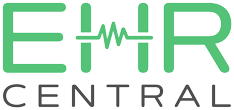How to Overcome Billing Challenges Within EHRs
Electronic Health Records (EHRs) have revolutionized healthcare, streamlined patient information management, and enhanced care delivery. Yet, amidst these benefits, healthcare providers often face significant billing challenges within EHR systems. This comprehensive

guide will explore the common hurdles encountered in EHR billing and offer practical strategies to overcome them, ensuring smoother financial operations and better patient care.
Section 1: The Complex Landscape of EHR Billing
1. Integration Issues
One of the foremost challenges in EHR billing is seamless integration with existing billing systems. The lack of synchronization can lead to discrepancies, resulting in errors and delayed payments. We’ll discuss the importance of integration and potential solutions to this issue.
2. Coding and Documentation Dilemmas
Accurate coding and documentation are paramount for successful billing within EHRs. We’ll delve into the intricacies of coding and documentation challenges and provide insights into improving these critical processes.
3. Navigating Compliance and Regulations
EHRs must adhere to a labyrinth of healthcare regulations, including the Health Insurance Portability and Accountability Act (HIPAA). Compliance is often a tricky aspect of billing within EHRs, and we’ll explore strategies to ensure your organization stays compliant.
How EHRCentral enhances your healthcare practice?
Section 2: Strategies for Overcoming Billing Challenges
1. Invest in Comprehensive Training
One of the most effective ways to combat billing challenges is to invest in staff training. This section will highlight the importance of educating your team on EHR systems, coding practices, and billing procedures. We’ll also discuss the benefits of ongoing training to keep your staff up to date.
2. Harness EHR Features
Modern EHR systems offer a plethora of features designed to streamline billing processes, from templates to automation. Discover how to make the most of these tools to enhance accuracy and efficiency.
3. Integrate Billing Solutions
This section delves into the advantages of integrating dedicated billing software with your EHR system. We’ll discuss how this integration can enhance accuracy, reduce errors, and expedite billing.
4. Audit and Quality Assurance
Regular audits and quality assurance measures can be your best allies in identifying and rectifying billing errors within EHRs. We’ll outline the steps to create an effective auditing process to ensure billing accuracy.
Section 3: Best Practices for EHR Billing
1. Standardize Workflow
Standardizing billing workflows within your EHR system can minimize errors and enhance efficiency. Learn how to create a streamlined, standardized process for your billing team.
2. Double-Check Documentation
Thoroughly reviewing and double-checking patient documentation is a fundamental practice for billing accuracy. This section will emphasize the importance of this step in your billing workflow.
3. Stay Updated with Regulations
The healthcare landscape is ever-evolving. Keeping abreast of changing regulations is essential for maintaining compliance in EHR billing. We’ll provide tips on how to stay informed and compliant.
Section 4: Real-World Success Stories
Explore real-world case studies of healthcare organizations that successfully overcame billing challenges within their EHR systems. Discover the strategies they employed and the positive outcomes they achieved, offering inspiration for your own journey.
Conclusion
In conclusion, billing challenges within EHRs are not insurmountable obstacles. By implementing the strategies and best practices discussed in this guide, healthcare providers can confidently navigate the complexities of EHR billing. Overcoming these challenges ensures financial stability and, more importantly, enables healthcare organizations to deliver the best possible care to their patients.





